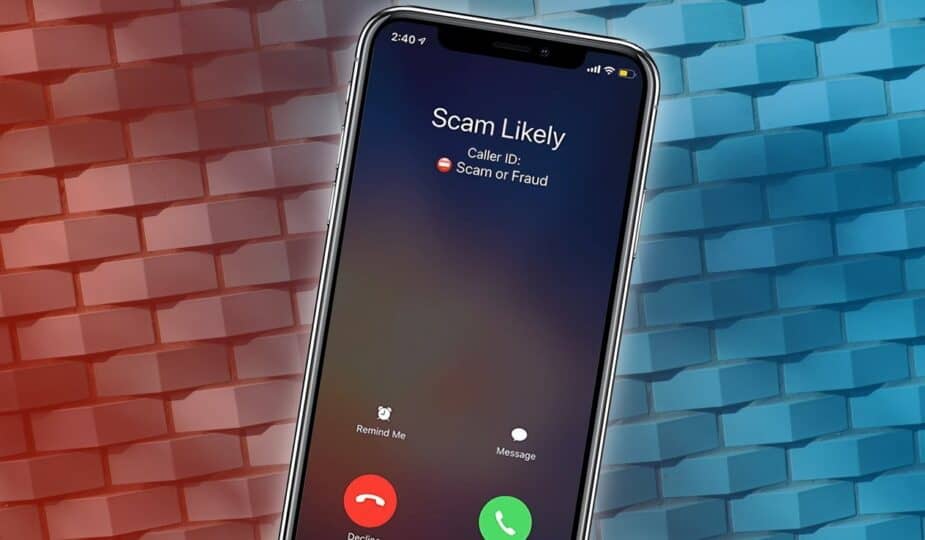A fraudulent call or email may pose a risk to your personal information.
 1 Facebook x.com Reddit
1 Facebook x.com Reddit
Last updated 33 minutes ago
Staying safe online can be challenging as scams become more sophisticated over time. Here's how to protect yourself and your Apple account.
Cybercrime is becoming an increasingly serious problem as internet users are often at risk of account hacking, data leaks and fraud. With the rise of data breaches, it has become very easy for scammers to obtain pieces of information that they can use against you.
Criminals are only going to get worse, so users need to learn how to protect themselves.
Even with the best password management apps and the highest levels of encryption available to consumers, users themselves are still the weakest point. Criminals don’t need to break into your account security, they only need to convince you to help them.
As a privacy and security-focused company, Apple has moved to release additional resources to help users become safer online. These documents on their support pages outline many of the ways users can do something to prevent bad things from happening to their accounts.
Below is a summary of some of the most important things to keep in mind when dealing with potential online scams.
Social Engineering and Phishing
A high-class way of saying “A lie that seems true in order to get something of value,” social engineering refers to a very common type of attack. One that relies on the attacker posing as someone else, like Apple support staff or those “Microsoft support” calls that often annoy people.
Often, the attacker will pose as a legitimate representative of a company you might do business with, like Apple. They will then try to do various things to get you to provide information that can be used to access your accounts, like login credentials or security codes.
In some cases, hackers use data obtained from major data breaches as a starting point. For example, a Trello data breach in January exposed more than 15 million accounts, including names, usernames, and email addresses.
If someone calling you can provide your name, address, date of birth, or other credentials, victims may be convinced that the caller is real. The caller may then be willing to provide the scammer with more information because they have apparently proven themselves to be “legitimate.”
Another type of attack is phishing, which is essentially the same thing but carried out through email or messaging services. With the exception of supposed emails from the Nigerian royal family, phishing attacks can look like vaguely legitimate emails from real companies.
These messages often insist that the user can benefit from something that has gone wrong, or can be as trivial as a fake alert that someone has requested a password reset.
If you receive a call or message from a seemingly legitimate company and you are unsure whether it is a scam to obtain your credentials, you should contact the company directly through official channels.
You don't have to go that far, though, as there are often clues in the messages and emails that they are not legitimate.
How to Recognize Fraudulent Emails and Messages
- The email address or phone number does not match the company it claims to be from.
- The email address or phone number you were contacted at is not the one you originally provided to the company.
- The links in the messages appear to have a URL that does not match the company's official website.
- Formatting or language issues that differ from normal emails from the company. Spelling errors are a big clue here.
- The email asks for personal information from you. The emails are sent in plain text over the Internet, so never send such credentials this way.
- You weren't expecting the contact in the first place, and it contains an attachment. Often, the attachment contains malware, so leave it alone.
Apple Accounts
While Apple has many security measures in place for accounts, it cannot protect against all threats. This is especially true if Apple users are convinced that they are handing over their information.
Here's what Apple says you should do to protect your Apple account and devices:
How to Protect Your Apple Accounts from Scammers
- Don't share personal or security information, such as passwords or temporary security codes. If someone directs you to a website to enter them, don't agree to it.
- Use features like two-factor authentication to help protect your accounts. Keep your security information up to date. Apple will never ask for this information, even if it’s necessary for support.
- If asked, don’t use Apple Gift Cards to make payments to others. Gift cards are often used as a payment method for fraudulent activities.
- Take the time to learn how to spot genuine Apple emails related to App Store or iTunes purchases.
- Review Apple’s guides for keeping your Apple devices and data secure.
- Only download software from sources you trust.
- Don’t blindly click on links in emails or open attachments in unsolicited messages.
- Avoid providing personal information if someone pretending to be Apple calls or messages you directly. Instead, contact Apple through official channels.
Reporting Suspicious Contacts
If you're contacted by someone claiming to be from Apple but isn't, there are a few things you can do to help the company thwart their efforts.
- For starters, Apple says users can forward suspicious emails to [email protected].
- If you're receiving spam through iCloud.com, me.com, or mac.com, mark it as spam or move it to the iCloud Spam folder. This will help improve Apple's iCloud Mail filtering system.
- If you're receiving spam through Messages, click Report Spam below the message. You can also block messages and calls from contacts.
Also, remember that Apple has a list of other resources to help keep your personal data and accounts safe.
Follow AppleInsider on Google News










